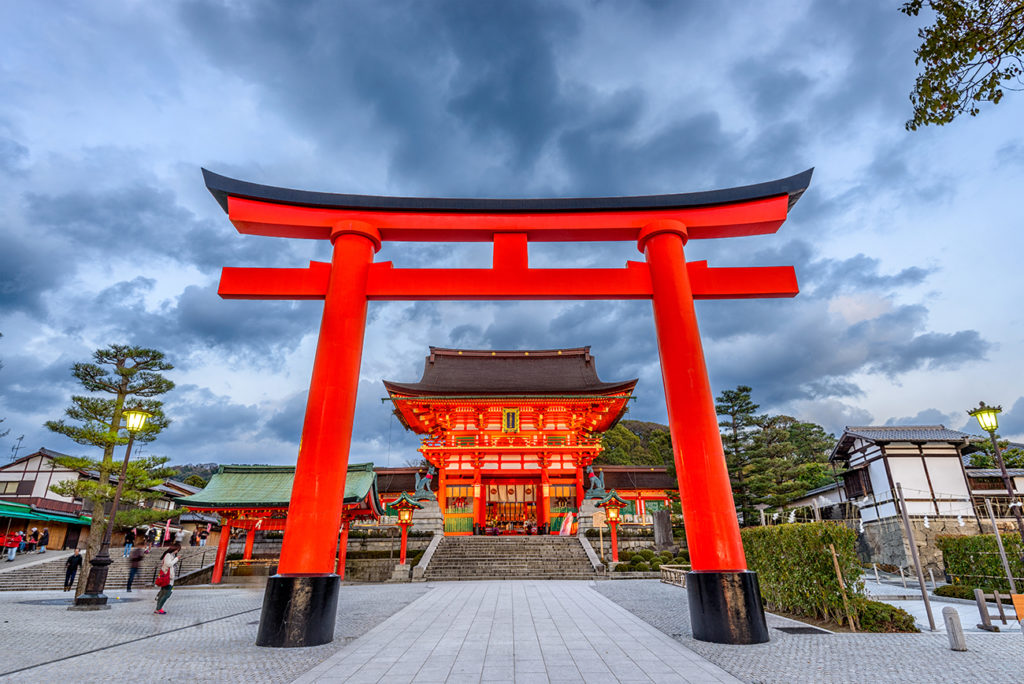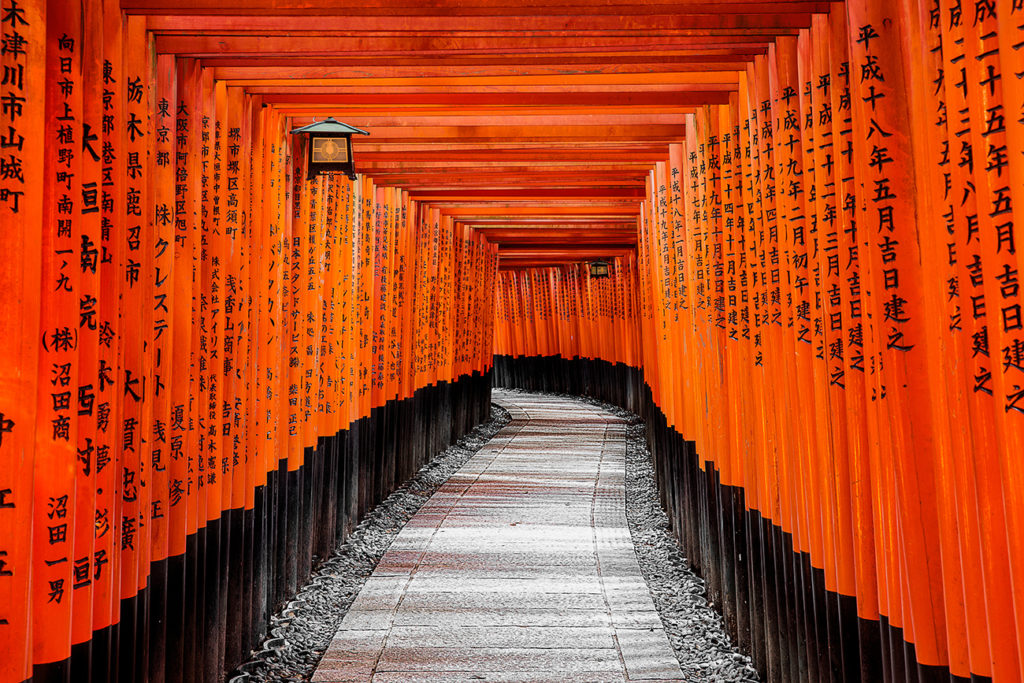
A Closer Look into Fushimi Inari Taisha Shrine
For most Japanese, religion is an important part of life, and the country has many shrines and temples. Shrines and temples are very similar to each other. Simply put, a temple is a place for Buddhist worship while a shrine is for Shintoworship. (Shinto is an indigenous religion in Japan.) To compare a shrine to a temple is like comparing a church to a mosque.
Fushimi Inari Taisha (伏見稲荷大社) is a shrine located in Fushimi-ku, Kyoto, Japan. It is the head shrine of Inari Ōkami (稲荷大神, also Oinari), the kami of sake, foxes, tea, fertility, rice, agriculture, industry, success, and general prosperity, and it is one of the principal kami of Shinto.
Fushimi Inari Taisha torii
In ancient Japan, Inari was also an important patron of merchants and sword smiths. Inari is sometimes a collective of three to five individual kami.
Fushimi Inari Taisha is nestled at the base of a mountain also known as Inari. The mountain, 233 meters above sea level, has trails leading to many smaller shrines where people can also worship. Perhaps the most striking part of the Fushimi Inari Taisha Shrine are the thousands of torii lining the path that leads to the inner shrine (奥宮, okumiya). Each torii was donated by a Japanese business praying for prosperity and good fortune.
Emperor Murakami paid special tribute to Fushimi Inari Taisha. He made the shrine the object of Imperial patronage. In 965 during the early Heian period, the emperor decreed that messengers record in writing the important events to the guardian Inari of Japan.
From 1871 to 1946, Fushimi Inari Taisha was designated officially by the Japanese government the Kanpei-sha (官幣社) identified the hierarchy of government-supported shrines associated with the Imperial family.
Fushimi Inari Taisha is rich with Japanese tradition and culture, truly a beautiful place worth visiting whenever in Japan.

